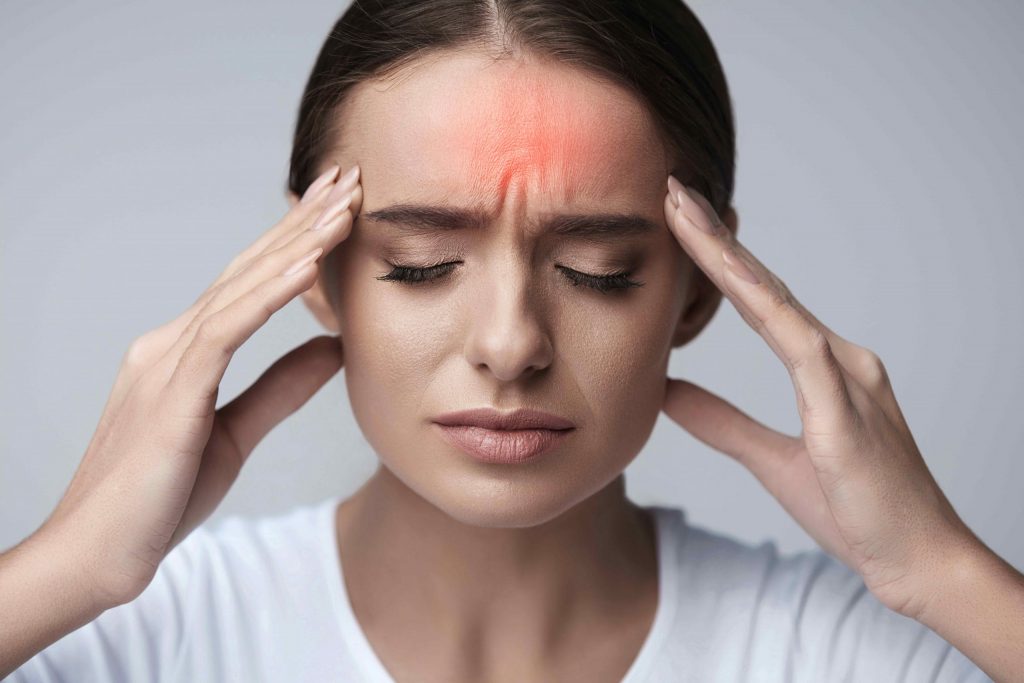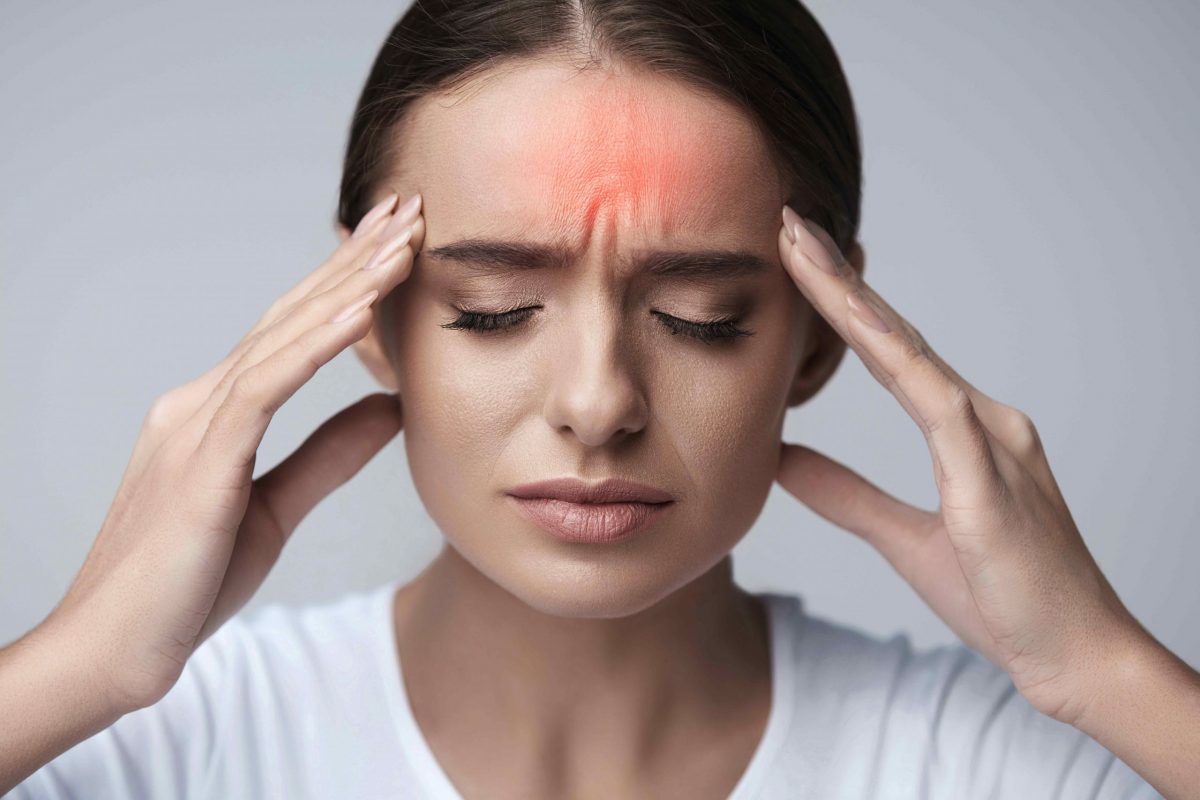
Table of Contents
- What is a Headache?
- Types of Headaches
- Migraines are Not Just Headaches
- Differences Between Headaches
- Diagnosis
- Treatment
- Science of Headaches
Headaches and migraines are a global affliction. According to the World Health Organization, half to three-quarters of the world’s adults aged 18-65 years old had a headache in the last year. Of those people, 30 percent reported a migraine. Both are painful and can interfere with life activities while they endure, but there are differences between a headache-causing pain and pressure in the head and a migraine that has a variety of symptoms that may include a headache.
Let’s look at the different types and symptoms of headaches, differences between a headache and a migraine, and what you can do about them.
What is a Headache?
A headache is a common condition that most people experience many times in their lifetime. It is pain and pressure felt in the head and face and can even create soreness in the neck and shoulders. The pain is often described as throbbing, stabbing or a dull ache. It can be mild pain or so severe that it causes nausea and an inability to function.
The head and face have many pain-sensitive structures that include the skin, sinuses, blood vessels, and nerves. Many things can trigger a temporary headache, remitting (comes and goes) or chronic. They include factors like chemical activity in blood vessels and nerves, a sinus infection, certain foods, and stress.
There are different types of headaches. They generally fall under one of two categories which are primary and secondary. A secondary headache is a symptom of a medical condition impacting the pain-sensitive nerves in the head, like infected sinuses, concussion and dental problems. A primary headache stands alone. It is not a symptom of something else.
Types of Headaches
Primary Headache Syndromes
- Migraine
- Tension Headache
- Trigeminal Autonomic Cephalalgias
- Cluster Headaches
Other Primary Headaches
- Cough Headache
- Exercise Headache
Secondary Headache Syndromes
- Post-Traumatic Headache
- Cranial and Cervical Vascular Disorders
- Non-vascular Intracranial Disorders
- Substance Abuse and Withdrawal
- Infections
- Disorders of Homeostasis
- Neck, Sinus, Teeth, or Mouth Disorders
Primary headaches are broken down into different types. The major and most common types are as follows.
Tension headache
This is the most common headache type. The specific causes of this type of headache are still being researched, but most people experience them throughout their lives. The tension headache is sometimes called a stress headache. It is also called a muscle contraction headache because the muscles in the neck and head are believed to be an important factor leading to tension headaches in some cases. The pain is usually dull, and there is a feeling of pressure on the forehead. Pressure may also be experienced on the back and sides of the head.
Cluster headache
This type of headache is very painful. It occurs in cluster periods or in cyclical patterns. It causes intense pain on one side of the head or around one eye, along with redness and swelling around the eye. The pain can radiate to other areas of the head, face and neck.
Migraine headache
This type of headache causes severe pain. The pain usually occurs on one side of the head and is accompanied by a throbbing sensation. They usually cause extreme sensitivity to sound and light. In some cases, the person gets a warning that a migraine headache is developing because an aura develops before or during the migraine experience.
Migraines are Not Just Headaches
A migraine is a headache, but it is only one symptom of a larger issue. Migraine is considered a neurological disease. The Migraine Research Foundation explains the migraine is much more than a severe headache because it leads to incapacitating neurological symptoms. They include some or all of the following.
- Severe throbbing pain
- Visual disturbances like an aura
- Nausea and vomiting
- Dizziness
- Extreme sensitivity to light, touch and smell
- Tingles or numbness in the face or extremities
What is less known is that neurological symptoms can occur without any pain in the head. In 15-20 percent of migraines, neurological symptoms develop before head pain.

People have identified a variety of migraine triggers. For example, missing meals may cause a hunger migraine. A hunger migraine indicates the blood sugar level has fallen lower than it should due to lack of nutrition.
Differences Between Headaches
The similarities of some of the symptoms can make it difficult to identify whether you are experiencing a migraine vs cluster vs tension headache. A cluster headache can be painful and debilitating like a migraine, for example.
The location of headaches is one clue. It is why the types of headaches and location of headaches are discussed at the same time. Location of pain in the head is a differentiating factor.
For example, the difference between a tension headache and migraine includes where the headache pain is felt. The tension headache usually spreads across both sides of the head, often beginning at the back of the head.
Migraine throbbing pain may on one side of the head, though approximately one-third of migraines affect both sides of the head. A migraine can develop behind the eye or behind or in front of the head. However, the migraine is usually accompanied by neurological symptoms, like an aura and extreme sensitivity to light and smell. Many sufferers are unable to talk or walk because it worsens the pain.
The tension headache may feel like a tight rubber band was placed around the head. The pain is usually mild to moderate, unlike a migraine’s severe pain. You do not experience issues like auras, and any sensitivity to light and sound is mild. A tension headache can be triggered by everyday activities, like missing meals or sitting hunched over a computer or even grinding teeth while sleeping.
Cluster headaches have many of the same symptoms as migraines, including sensitivity to light and sound and an aura. You might even feel nauseated. However, the cluster headache usually lasts for no more than 30-90 minutes. A migraine lasts a day or several days. You experience one migraine in a day but can have up to eight cluster headaches. In between the cluster headache events, no pain is felt.
Migraine pain does not go away while the headache lasts. The migraine location can vary in the head, while the cluster headache occurs on one side of the head.
Migraine sufferers avoid noise, light and smells, often retiring to a dark quiet room with the eyes covered. Most people with tension headaches take an over-the-counter pain reliever and continue functioning. Cluster headache sufferers tend to get agitated, and over-the-counter medications are usually not effective.
Diagnosis

Most headaches can be diagnosed clinically with history and physical examinations by a physician. Only rarely and especially for secondary headaches you may need diagnostic imaging studies, like MRI or CAT scan. There may be the need for blood work to check for infections or other inflammatory diseases.
Treatment
Most headaches respond to common medications known as non-steroidal anti-inflammatory drugs (NSAIDs) like Ibuprofen, Naproxen, etc. If your headache is chronic or lasts for the majority of the days in a month, then you may benefit from maintenance treatment with antidepressants or a beta-blocker, such as Metoprolol.
Other treatments are geared to specific types of headaches. Studies have demonstrated that sphenopalatine ganglion (SPG) blocks and neurostimulation can provide pain relief in patients with cluster headaches, migraines, and other trigeminal autonomic cephalalgias. These may also respond to rest and behavioral therapy.
Headaches are a difficult problem for many people and rob them of quality of life. If you are experiencing headaches, and don’t seem to find the help you need, it may be time to speak to a spine and pain management doctor. It’s not something you should put off. It’s a way to restore you to normal life and the activities you enjoy. Don’t let headaches rule your life anymore.
Science of Headaches
Explaining the migraine and headache difference is based mostly on symptoms at this point. The National Institute of Neurological Disorders and Stroke says researchers believe migraines develop from genetic mutations in the brain that lead to neurological abnormalities. The International Headache Society considers the pain experienced, the number of attacks and other symptoms to diagnose a migraine. The attacks should have occurred at least 5 times and each one should have lasted 4-72 hours.
One thing is for certain. Any headache is an unwanted headache.
Sources
- https://www.who.int/news-room/fact-sheets/detail/headache-disorders
- https://migraineresearchfoundation.org/about-migraine/migraine-facts/
- https://newsnetwork.mayoclinic.org/discussion/mayo-clinic-q-and-a-whats-the-difference-between-cluster-and-migraine-headaches/
- https://pn.bmj.com/content/19/6/521
- https://www.ninds.nih.gov/Disorders/All-Disorders/Migraine-Information-Page
